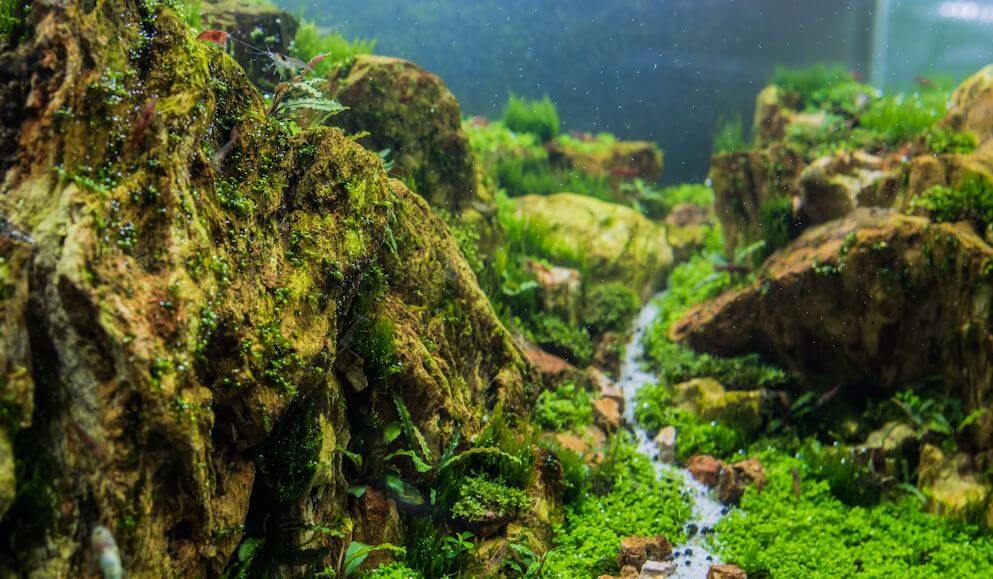Yes, fish waste in an aquarium can contribute to algae growth, but it does so indirectly.
Fish waste contains ammonia, which is broken down by bacteria into nitrites and then nitrates. Nitrates are a nutrient source for algae, and high levels can promote algae growth. However, proper maintenance, including regular water changes and cleaning, can help control algae in an aquarium.
Fish Waste and Algae Growth
Aquariums require proper maintenance to keep the water clear and healthy for fish and other aquatic life. A common concern among aquarium owners is whether fish waste contributes to algae growth.
Nutrient Contribution
Fish waste contains essential nutrients such as nitrogen and phosphorus, which are released into the water as waste decomposes. In an enclosed aquarium system, these nutrients can accumulate if not properly managed. Excess nutrients, especially nitrates, provide an ideal environment for algae to thrive.
Waste Decomposition
As fish waste decomposes, bacteria in the aquarium break it down, converting ammonia into nitrites and eventually nitrates. This process, known as the nitrogen cycle, releases nutrients that algae use to grow. If these nutrients are not controlled through regular cleaning and water changes, algae can overgrow and dominate the aquarium.
Algae Feeding Mechanisms
While algae do not directly consume fish waste, they thrive on the nutrients (especially nitrates) released by waste decomposition. Some species of algae are particularly efficient at using these nutrients and can quickly spread in a poorly maintained tank. Preventing algae overgrowth requires reducing excess nutrients through water changes, removing waste, and using effective filtration.
Aquarium Maintenance Practices
To control algae and maintain a healthy aquatic environment, regular maintenance is essential. Key practices include cleaning, water quality monitoring, and algae control strategies.
Regular Cleaning
Regularly cleaning your aquarium is crucial to removing debris, uneaten food, and fish waste. These substances can decompose and release harmful chemicals, including ammonia and nitrates, which can harm fish and promote algae growth. It’s recommended to change about 25% of the water every two weeks and about 50% monthly, depending on the tank’s needs.
When doing regular water changes, using a water conditioner can help remove chlorine and neutralize ammonia. A product like this aquarium water conditioner* ensures your tank stays safe for fish and helps prevent algae.
A gravel vacuum can be extremely helpful in removing uneaten food, fish waste, and debris. A tool like this aquarium gravel cleaner* makes regular maintenance easier and keeps the substrate clean.
Water Quality Monitoring
Maintaining proper water quality is critical for preventing algae. Water testing kits are essential for monitoring ammonia, nitrite, and nitrate levels. You can find a reliable aquarium water testing kit* to help accurately measure these parameters.
If ammonia or nitrite levels are high, it means the biological filter isn’t working properly, and more frequent water changes are necessary to prevent an algae bloom.
*As an Amazon affiliate, we may earn a commission from qualifying purchases.
Algae Control Strategies
Algae control involves reducing excess nutrients, light, and carbon dioxide in the aquarium. Since fish waste is a significant source of nutrients, controlling waste accumulation through regular water changes and cleaning can help prevent algae overgrowth. Additionally, limiting the amount of light in the tank and adding live plants (which compete with algae for nutrients) can further reduce algae growth.
Types of Aquarium Algae
Different types of algae can appear in your aquarium, depending on factors such as light, nutrient levels, and water flow:
- Green Algae: The most common type, often caused by excess nitrates and phosphates. Managing light exposure and nutrient levels helps control it.
- Brown Algae (Diatoms): Typically found in new aquariums and caused by high silicate levels. It can be reduced by improving water flow and lowering silicate levels.
- Blue-Green Algae (Cyanobacteria): A bacteria that can form slimy layers on surfaces and deplete oxygen. It can be controlled by reducing nutrient levels and improving water circulation.
- Red Algae (Rhodophytes): Common in saltwater tanks, red algae thrive in low water flow and high nutrient conditions. Increasing water flow and lowering nutrients helps manage it.
Preventive Measures
Aquarium Setup
Proper setup is essential to prevent excessive algae growth. Choose the right tank size based on the number of fish you have, as overcrowding can lead to excess waste. Additionally, a well-maintained filtration system is crucial to keeping water clean and clear.
Investing in a high-quality aquarium filter* will help maintain water quality and reduce the buildup of excess nutrients.
*As an Amazon affiliate, we may earn a commission from qualifying purchases.
Feeding Practices
Overfeeding your fish can result in uneaten food, which breaks down and releases nutrients that promote algae growth. Feed your fish only what they can consume in a few minutes, and remove any leftover food to reduce waste buildup.
Lighting Conditions
Algae need light to grow, so controlling the light exposure in your aquarium is important. Too much light can encourage algae growth, while too little can affect plant health. It’s crucial to research the specific lighting needs of your aquarium and adjust accordingly to maintain a balanced environment.
It’s important to provide the right amount of light for your aquarium. Too much light can encourage algae growth, but using an adjustable aquarium LED light helps balance the light exposure for both plants and fish.
Conclusion
To manage algae growth in an aquarium, it’s important to control nutrient levels, maintain proper water quality, and manage lighting. By following good aquarium maintenance practices such as regular cleaning, water changes, and monitoring water quality, you can prevent excessive algae growth and enjoy a healthy, vibrant aquarium.




